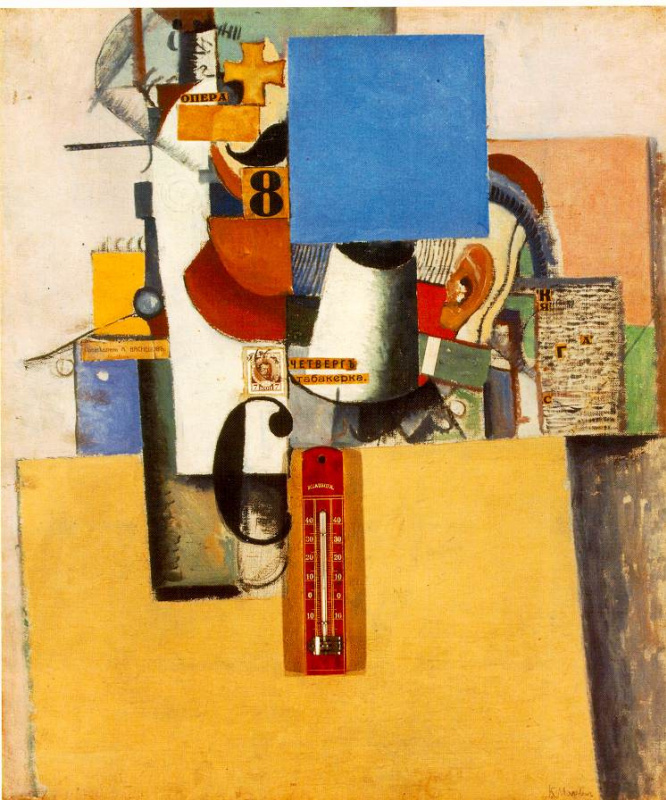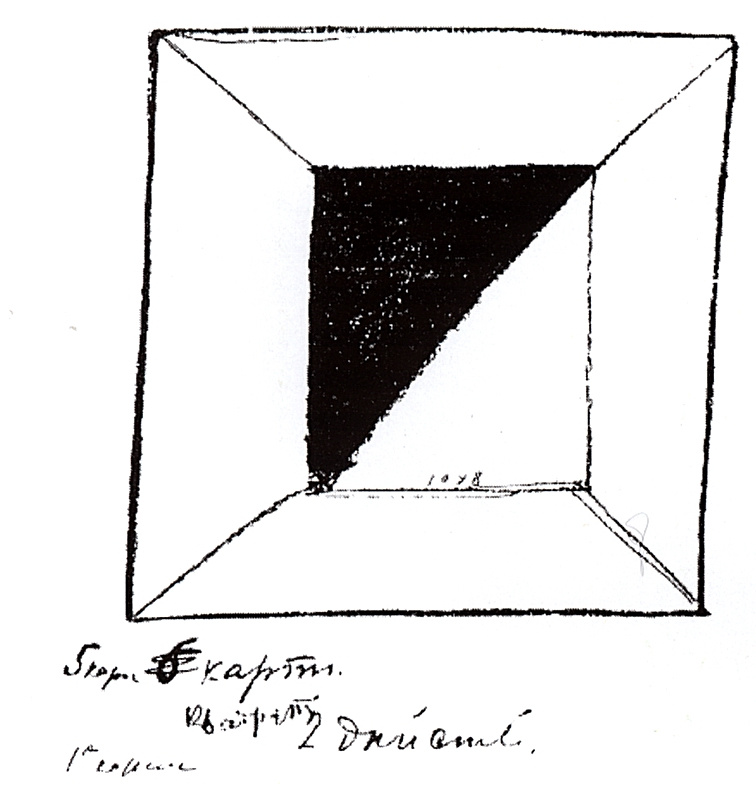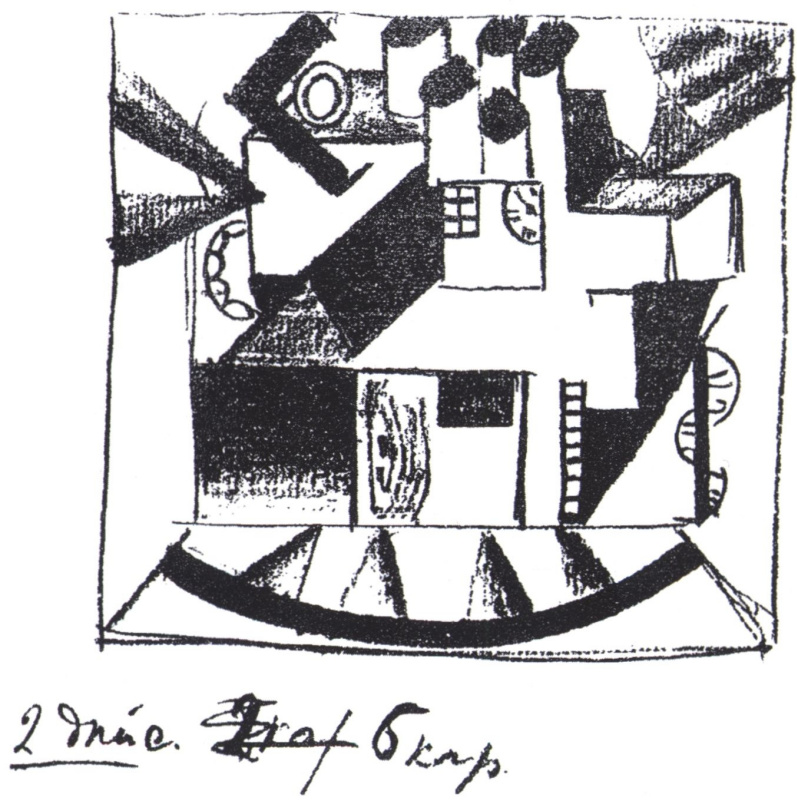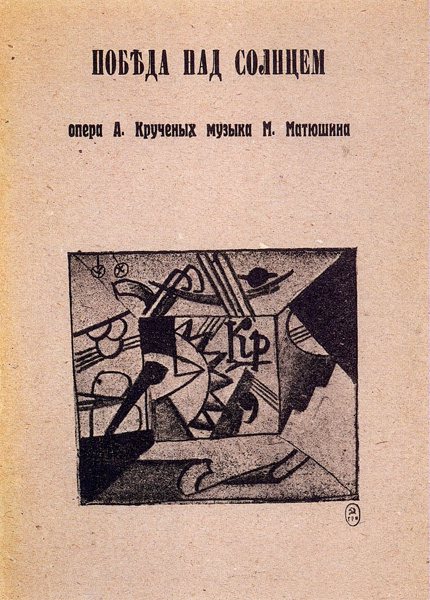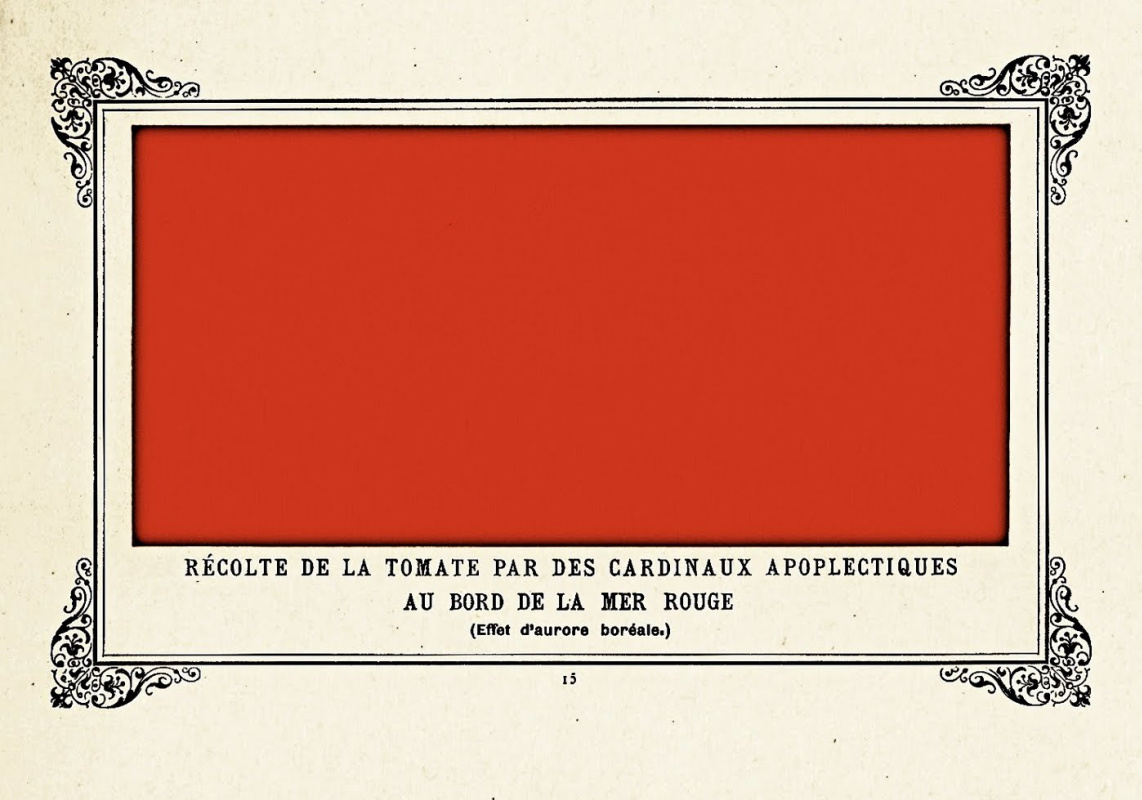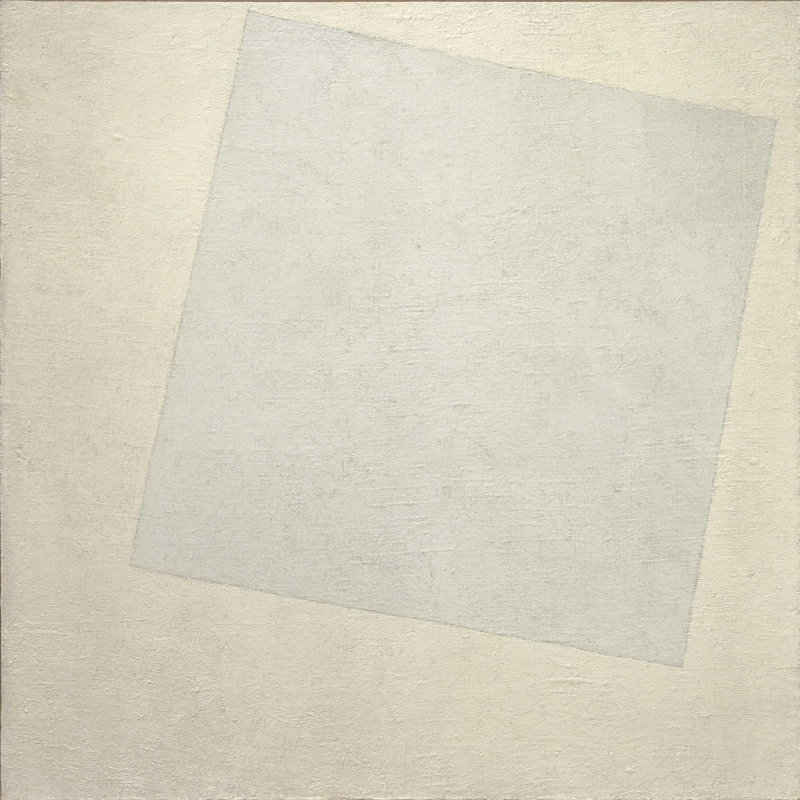The Black Square by Malevich is not so much a painting, but the phenomenon. It is being studied, it is attempted to repeat, people extol and deny it, laugh at, they pray at it and send curses at it — it seems that arguments around it will never stop. Mainly, the arguments are all about what Malevich wanted to say to the people and to the universe. However, the question "how" is not of the lesser imortance in the mythology of The Square. How did Malevich manage to attain such deafening effect with so avaricious facilities? How could he create his best-known work? Here you may find several popular versions.
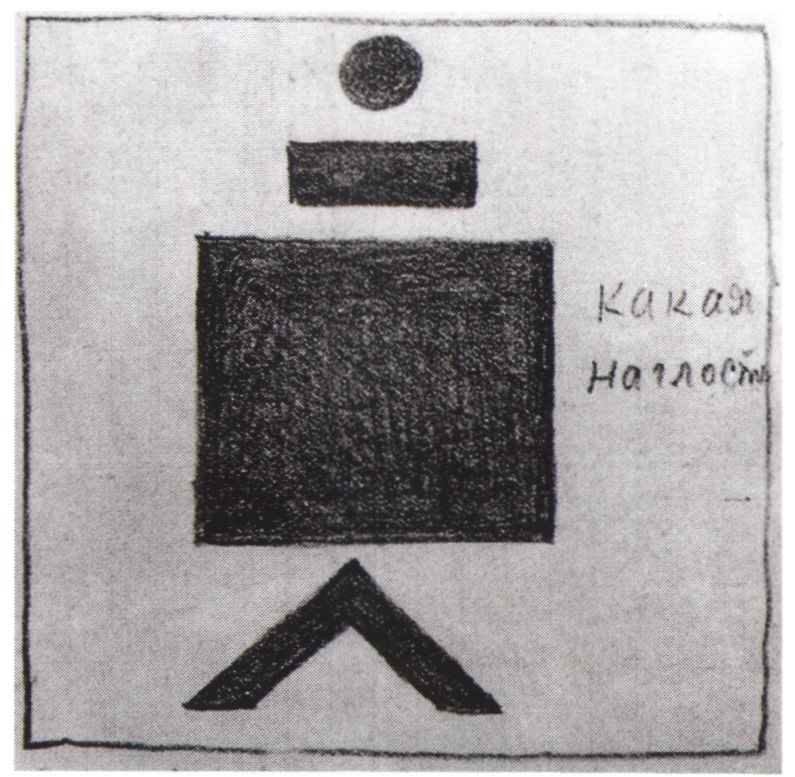
Analytically
While working over The Black Square, Kazimir Malevich knew exactly what he wanted. He has figured everything out in advance — size, density of its painting out, the character of strokes and even slight asymmetricness. If he had deviated from his calculations — even for a single degree, then there would have nothing come out.For: Malevich actually was a researcher and it supports this version. He experimented much, especially with color and its influence on human body. He happened to let the typists sit in the rooms with the walls of different tones. He fixed accurately the data: who of them types quicker, who makes more errors, who feels unwell. However, such experiments were conducted already after his first "Square" had already been painted.
Against: In spite of his habut to theorize abundantl, Malevich, however, was intuitional genius — mostly he adjusted "scientific grounds" to what was already found by chance, by touch. When, for example, Velimir Khlebnikov was searchinf for key numerical correlations in his pictures, Malevich was curious about it, but not more than that. He considered Khlebnikov’s approach to be too rational. "You are a highbrow, you are an astronomer, an astrologer. You measure every minute what space of senses is in an object", — once he said to his high-browed friend.
Black Suprematist square
1915, 79.5×79.5 cm
Intuitivly
Kazimir Malevich painted The Black Square in a state of trance, as he realized what he dI’d only afterwards.For: Kazimir Severinovich explained that his work on The Black Square was an extatic experience. this process description was full of special "effects" and colourful details: allegedly the lightnings were sparkling, the mind fell into darkness, "the eye went out in new gleams".
Against: to put it mildly, Malevich liked to bend the truth exaggerating things. Many facts of his biography were spread by the artist himself and they appeared to not exactly the facts. And the story that The Black Square was the result of some shamanistic practices, should not be absolutely believed in. But what is known for sure is that Malevich was about to create The Square a long time ago — the series of sketches was done at least two years prior to "the gleams and lightnings", thus the process of its creation was rather long and fully conscious
Above: works with the squares dated 1913−14 by Malevich
Below: drawings of decorations to the opera "Victory over the Sun"
Below: drawings of decorations to the opera "Victory over the Sun"
While working at something else
Initially something black was a part of another subject. But as it was getting larger, it was embodied into the square and has filled the whole canvas space.For: Already in 1929 The Black Square was touched by the crackelure net — there was something pink, green and yellow showing through the cracks in the paint layer. Later on, The Black Square being X-rayed by the experts of Tretyakov gallery, it was discovered there was not a single work hidden underneath, but even two other paintings. Perhaps, Malevich was trying to attain some special coloristic effect using such multi-layeredness to attain. And it can also be true that the artist has painted the black square over the work he considered to be poor.
Against: the same sketches done earlier on, during the decoration process for the opera " Victory over the Sun", testify against this hypothesis. Most likely is that Kazimir Severinovich just did not have clean canvas at hand at that moment.
Just for fun
Kazimir Malevich wished to laugh at impressionable public. He put The Black Square into the center of complicated philosophical doctrine, invented numerous ingenious theories, at the same time thumbing his nose behind everyone’s back.For: As a result of X-ray infra-red analysis, the experts have found out not only two other pictures lying underneath The Square, but also the inscription: "Battle of negroes in a dark cave". Specialists are 99,9% sure that the inscription was done by the hand of Malevich. It is an undoubted reference to the ppainting by Alphonse Hello, French writer and humorist, who was famous for his eccentric tricks in the nineteenth century. 33 years prior to Malevich Hello had painted black rectangle titled a"The battle of blacks in a cave deep in the night". The idea that Malevich further on continued to change bows wits Hello is supported by his subsequent squares — the red and the white ones. In monochromatic series of works by Hello there was also the red painting ("The tomatoes harvesting ashore the Red sea by apoplectic cardinals") and also the white picture ("The first communion First participle of anaemia suffering girls in the snow").
Against: In 1915, when The Black Square was painted, there was no neither X-ray, nor of infra-red analysis of the paintings. If he had prepared this kind of joke, then he would have to think of the method of its revealing to public, however, the secret of this inscription (as well as the fact of hpits existance) was carried away with Malevich. Maybe, all this had really began as a joke, and only afterwards Kazimir Severinovich realized that he had created something greater, than the remake of the ancient gag.
Malevich’s idea was to slap The Black Square in the face of public taste, establishment, arrogant art critics, old school artists, futurists, in a word, all of them.
For: Kazimir Severinovich’s nature was disagreeabl. He could come to the exhibition with the numbers written on his forehead, thus becoming the most important exhibit there, or he could walk around Moscow with the wooden spoons in the button holes. He appreciated attention (often unhealthy) to him.
Against: What now can be easily regarded as inclination to the outrageous, was Malevich’s sincere position — he was interested in the possibility to speak out, but not in the audience reaction. For example, he blew off applause of his associates when calling Serov "untalented brush pusher", and the Academy "the stables of petty bourgeois". And he was sincerely puzzled: "I did not tease anybody, that’s what I really think". The Black Square" was his chance to speak out and permanent fuss around it was just a side-effect.
For: Kazimir Severinovich’s nature was disagreeabl. He could come to the exhibition with the numbers written on his forehead, thus becoming the most important exhibit there, or he could walk around Moscow with the wooden spoons in the button holes. He appreciated attention (often unhealthy) to him.
Against: What now can be easily regarded as inclination to the outrageous, was Malevich’s sincere position — he was interested in the possibility to speak out, but not in the audience reaction. For example, he blew off applause of his associates when calling Serov "untalented brush pusher", and the Academy "the stables of petty bourgeois". And he was sincerely puzzled: "I did not tease anybody, that’s what I really think". The Black Square" was his chance to speak out and permanent fuss around it was just a side-effect.
Title illustration: Kazimir Malevich. The Nerve! 1915
Written by Andrew Zimoglyadov.
Written by Andrew Zimoglyadov.







